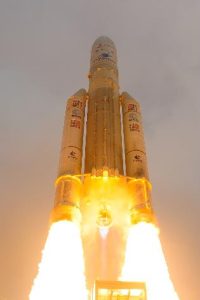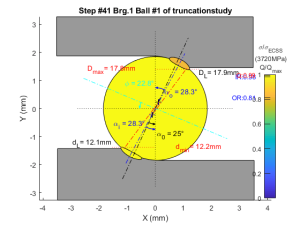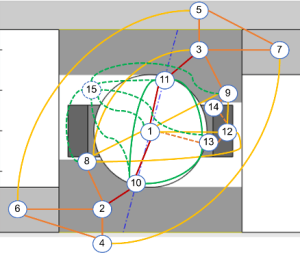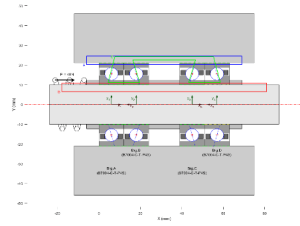What is more emblematic of modern engineering than a space rocket?
It takes an extreme concentration of power to lift a payload out of Earth’s gravity well. Each liquid-fuelled rocket engine will burn through hundreds of tons of fuel and oxidizer within minutes. The heart of the rocket engine is the turbopump that will push all that mass into the combustion chamber at extremely high pressure. At the heart of the turbopump are ball bearings that support the pump rotor as it spins at tens of thousands of rpm. Under cryogenic conditions. With no oil.
31 years ago, NASA’s Space Shuttle with its RS-25 main engines stood as the epitome of this achievement having been launching for a decade already. In Europe, the Shuttle-inspired Ariane 5 launcher with its Vulcain engine was still at the drawing board. Turbopump development required careful bearing design, but testing was hard and expensive. By developing CABARET (Code for Analysis of BeArings in Rocket Engine Turbopumps), ESTL provided ESA and the European industry with engineering software capable of modelling the special conditions of turbopump bearings: centrifugal and thermal strains, coulombic friction, flash temperature, start-up behaviour and hydrodynamic drag and churn losses. The software was validated largely with RS-25 and Vulcain data.
What environment is more unforgiving for a bearing than the inside of a turbopump?
Oddly enough, the very place a space rocket allows us to reach: the vacuum of space. Satellites and space probes are full of mechanisms (reaction wheels, solar array drives, antenna pointing mechanisms, deployment actuators, and others). These must operate reliably for years instead of minutes; with a few W of power instead of MW; in temperature extremes ranging from the heat of Mercury to the cold of the Outer Planets; at speeds as low as a single revolution per day or thousands of rpm; with a solid lubricant or a fluid lubricant with very specific properties. Most crucially, they operate in high vacuum and zero-g during flight, in air and 1-g during testing on Earth, as well as persist under high-g acceleration during launch. The bearings in them will have to be designed for all of that and testing is still hard and expensive.
Ever since CABARET was made available, the space industry has extended its use beyond turbopumps and towards space bearings, to assess the thermal envelope, torque margins, preload, stress, stiffness, gapping, and truncation requirements; fluid lubrication regime and cage stability were also addressed. To keep up with modern requirements, a new version, based on the versatile Matlab platform, with a modern GUI and significant feature improvements, has been developed on behalf of ESA: CABARET 3 was launched 1 year ago.
In early 2022, the Space Shuttle has been long retired, but the SLS is about to launch using the same RS-25 engines. After a successful career, culminating in the successful launch of JWST, Ariane 5 is handing over to Ariane 6 and reusable Prometheus lies in the future for Europe. New Space launch companies are coming up with new rockets at an unforeseen pace. As space agencies are preparing our return to the Moon, mega-constellations of satellites are being built; but also access to space is being democratised by the activity of hundreds of space start-ups, with great prowess but little experience at designing space mechanisms.
What lies ahead for space bearing modelling?
To remain relevant, CABARET has had to pick up this fast pace of development. Recognising this, ESA and ESTL are following up the software’s release with continuous user support, for troubleshooting, bug reports, training, and bearing analysis consultancy. In parallel, further development of features follows industry needs, with focus on supporting users through the bearing sizing process for space mechanism development (a.k.a. “Guided Mode”), and multi-bearing support. Significant thermal and torque modelling improvements are being researched.
One year after its launch, CABARET 3 has had its first feature update to v.3.1.7.0. The update contains significant fixes to bugs found by the ever-increasing user base throughout the year and some handy feature improvements. We aim to continue updating CABARET, with a launch cadence measuring up to the pace of the space industry.




